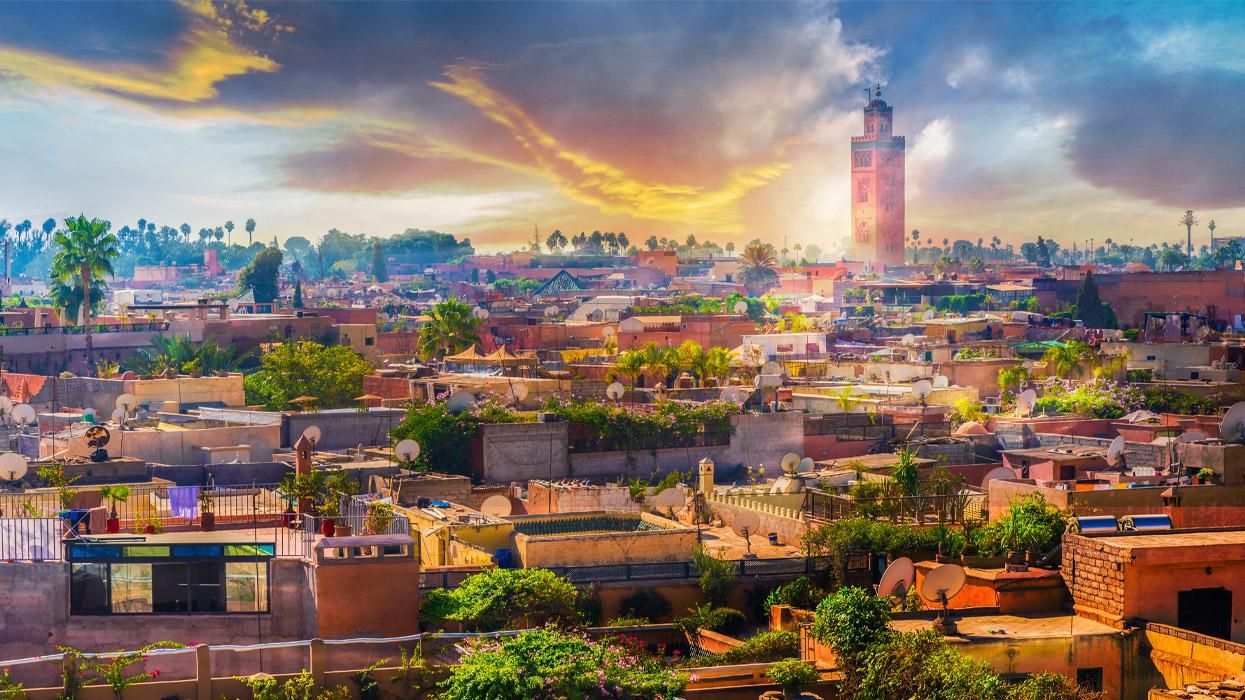
Shutterstock
Home to picturesque palaces, mosques, and gardens, this North African city is a gay hot spot despite the region's anti-LGBTQ+ laws.
February 10 2023 5:00 AM EST
By continuing to use our site, you agree to our Privacy Policy and Terms of Use.

Home to picturesque palaces, mosques, and gardens, this North African city is a gay hot spot despite the region's anti-LGBTQ+ laws.
Marrakech, a former imperial city in western Morocco, is a major economic center and home to over one million residents. The ancient city is in the country's center at the foot of the extensive Atlas Mountain range.
Morocco has long drawn notable gay creatives, including Truman Capote, Tennessee Williams, and Yves Saint Laurent; but the country isn't exactly 'chasing the rainbow' with its laws on homosexuality, which criminalizes same-sex activity. But the city of Marrakech has such captivating beauty, fascinating history, and architectural splendor, that queer tourists throng to it each year, making it quite the gay hot spot.
When planning a trip to Marrakech, it's crucial to adhere to local laws and to keep in mind that a queer scene is essentially nonexistent. Instead, a trip to Morocco is more of an immersive experience, brimming with vibrancy on every corner of the mazelike souks (markets).
Many Moroccan travel guides recommend skipping the larger hotel chains and getting your "authentically Moroccan" experience by staying in a picture-perfect riad inside the medina (Arab quarter). However, I suggest staying at one of the hotels listed below, all of which are accustomed to welcoming same-sex couples. They will also provide an enjoyable, luxurious experience and act as a haven during your stay in a country where same-sex activity is illegal.
Riads, which are essentially Moroccan houses, sometimes hundreds of years old, are often owned and run by families, some of which may not be as progressive when it comes to LGBTQ+ issues as the staff at the larger hotels. Discrimination concerning shared accommodation may be an issue in a smaller, locally run riad, so it's better to be safe than sorry and stay at a more prominent hotel. Nevertheless, I've included below must-visit riads for dining and drinking options.
One of the most mystical experiences travelers may have while visiting Marrakech is listening to the Muslim prayer blared from the mosque's speakers. This intense calling, the Adhan, is the Islamic call to prayer and is recited by the muezzin five times a day (at dawn, noon, mid-afternoon, sunset, and nightfall).
While I didn't experience any form of harassment or discrimination during my recent visit to the red city - and it's worth noting that I found the people of Morocco to be exceptionally warm and welcoming - there have been some high-profile cases involving foreign citizens prosecuted for breaching local laws; hence, all travelers should wield caution and avoid engaging in even mild PDA such as handholding.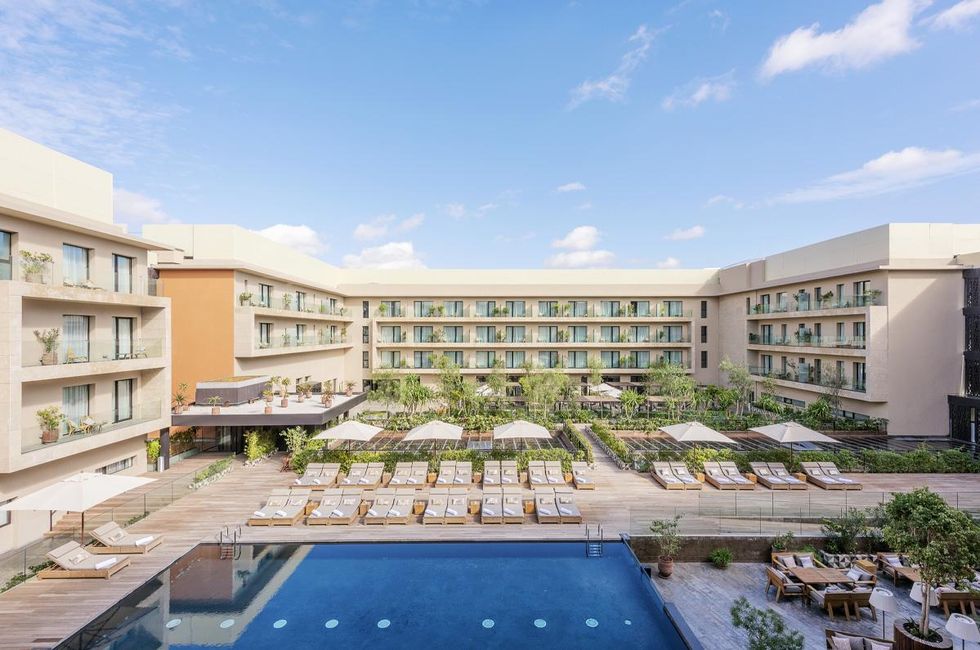
Courtesy Radisson Blu
Set in the heart of Marrakech, the 5-star Radisson Blu Marrakech Carré Eden welcomes visitors to the vibrant Gueliz quarter. Located in the newly built Carré Eden shopping complex, the hotel gives easy access to internationally recognized stores and restaurants, trendy nightlife nearby, and steps away from the affluent Hivernage neighborhood. Designed by famous architect Imaad Rahmouni, this modern hotel features a beautiful lobby, patio, and an onsite restaurant, Lila. The hotel is a striking contrast to the city's historic quarter, located just 10 minutes away, where you can see the Kutubiyya Mosque and explore Djemaa El-Fna. An excellent breakfast buffet with must-try cloud-like fluffy hummus and a lively bar with a DJ (and live music on some nights) adds to a memorable stay. The hotel's leisure facilities include a spa, a fitness center, and an above-ground swimming pool surrounded by a spacious patio with sunbeds. The staff is very friendly and attentive.
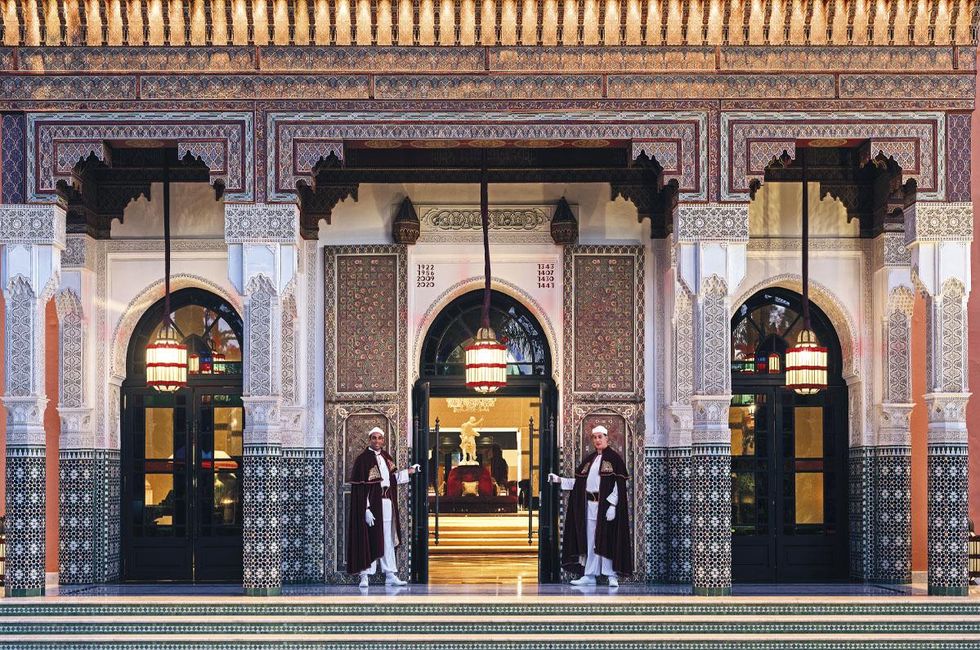
Courtesy La Mamounia
Initially opened in 1923, La Mamounia has undergone many renovations during its 100-year history, preserving its charm, heritage, and signature architecture while introducing new spaces and restaurant concepts. Situated at the fringe of Marrakech’s old city, La Mamounia is snuggled amid 20 acres of historic gardens, steps away from Djemaa el Fna Square. The luxury hotel boasts 135 stylish guest rooms, 71 suites, three private riads, an indoor and outdoor pool, a 20-seat private movie theater, several stores on-site including Dior and Saint Laurent, a comprehensive spa, four bars and four restaurants, including L’Asiatique par Jean-Georges. The legendary hotel, described as ‘the most lovely spot in the whole world’ by Winston Churchill, hosts a who’s who of international royalty, politicians, celebrities, and the jet set. Room amenities include a nightly turndown service, seasonal fresh fruit replenished daily, noise and sound-canceling electric blinds for the ultimate night’s sleep, and Garnier Thiebaut terrycloth bathrobes.
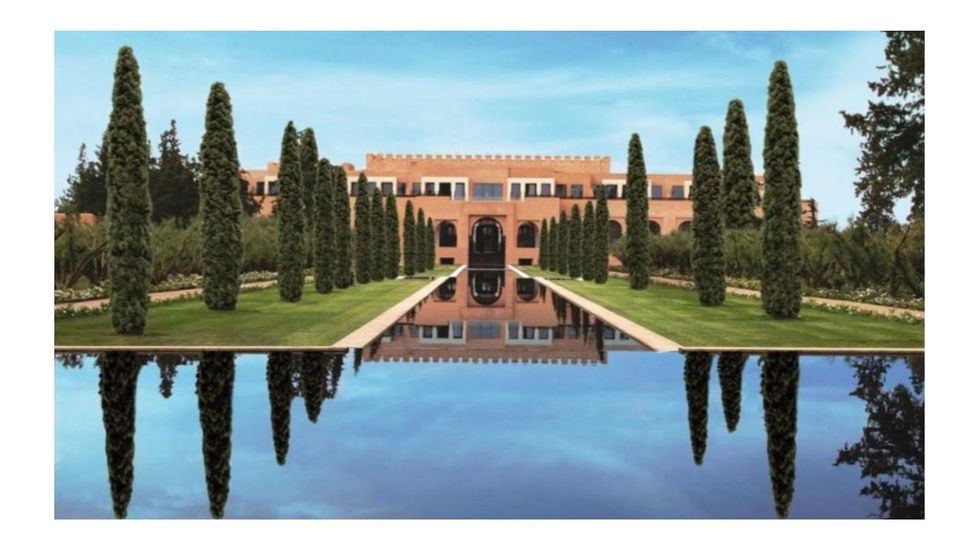
Courtesy The Oberoi, Marrakesh
Thoughtfully laid out to offer privacy, the spacious and luxurious rooms and villas at The Oberoi, Marrakech, many with large private pools and gardens, incorporate authentic Andalusian design and beautiful views. The highly ranked resort has beautifully landscaped gardens punctuated by water features, fragrant citrus trees, and centuries-old olive groves. Along with spacious accommodations, personalized wellness offerings, restaurants serving authentic Moroccan and international cuisines, and an engaging children's activity area, a stay at The Oberoi will be complemented by the staff's warm and sincere hospitality. Only a short drive from the hub of Marrakech, Oberoi Hotels and Resorts offers a serene getaway from the hustle and bustle while allowing easy access to some of Marrakech's most wondrous sites.
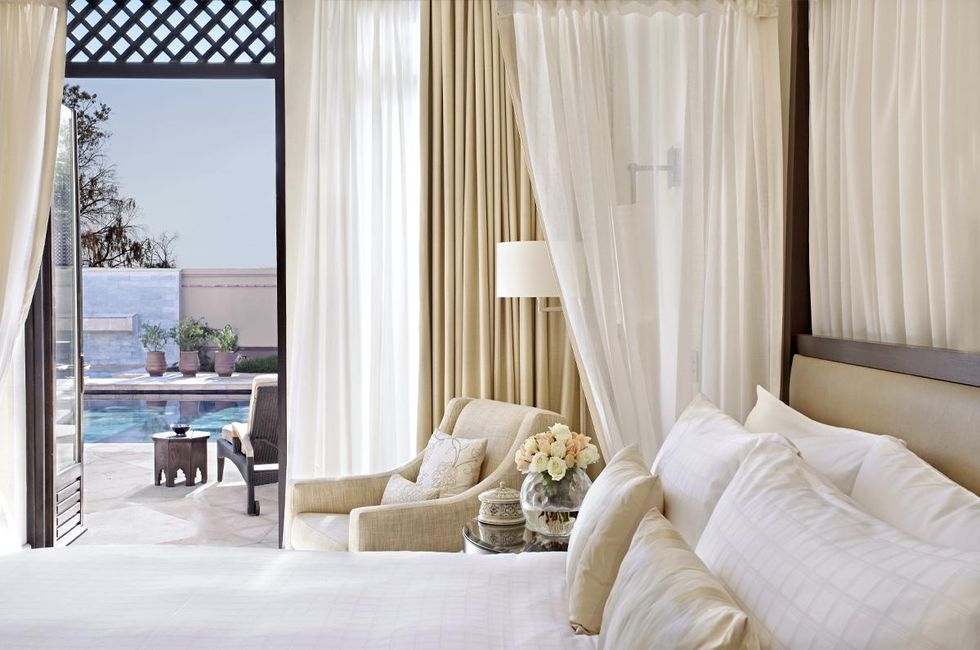
Courtesy Four Seasons Resort Marrakech
Four Seasons Resort Marrakech is an iconic resort with origins as a former olive grove dating back to the 12th century. The beauty of the Atlas Mountains, the Menara gardens, and the eternal blue Moroccan sky frames its unique location. The resort also boasts stunning Moroccan oasis gardens — so beautiful and relaxing that they almost rival the famous Jardin Majorelle. Private pools, tastefully Moroccan-crafted accommodations, and rich culinary experiences offer guests of all ages a connection with the unique Moroccan culture.
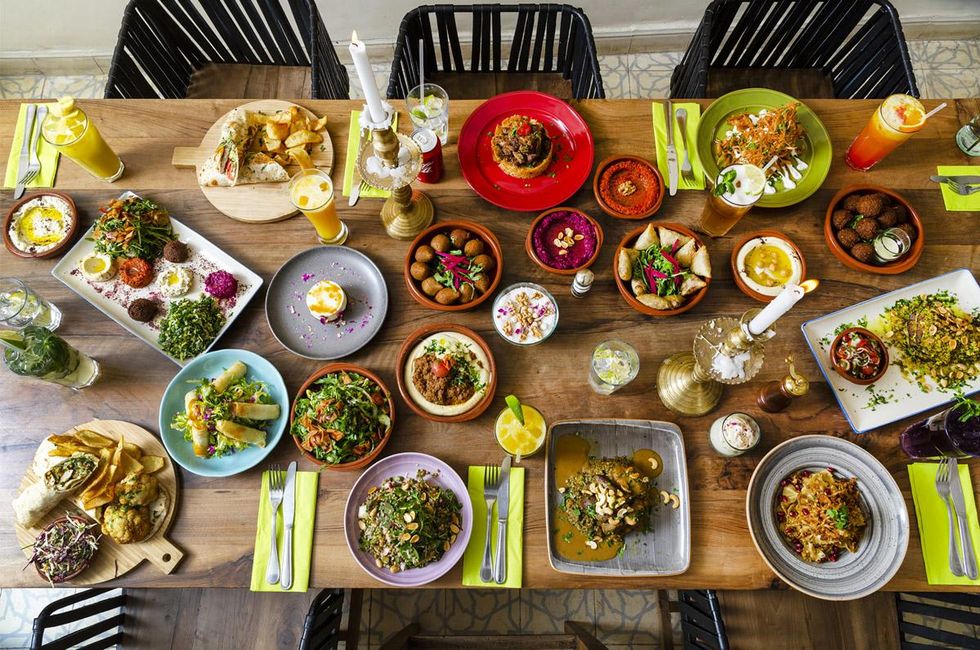
Courtesy Naranj
Naranj is a must-try Lebanese restaurant that offers varied dishes made from refined and fresh ingredients. The good vibrations, beautiful decor, and friendly staff will make you want to return at least once before you leave the city. Although no alcohol is served at the restaurant, there are plenty of other options to complement the cuisine.
Nomad opened in 2018, and in addition to serving meat, poultry, and seafood dishes, it has quickly become the go-to spot for vegan and vegetarian fare in Marrakech. The menu strongly focuses on local, fresh seasonal ingredients, offering revisions of traditional cuisine and international dishes with a Moroccan twist. If you're looking for a truly memorable dining experience with spectacular rooftop views while in Marrakech, stop by Nomad — you won't be disappointed!
Henna Cafe, located in the heart of the medina, is a no-frills, hole-in-the-wall kind of cafe open seven days a week, offering refreshing drinks, traditional Moroccan cuisine, and meat-based dishes as well as vegan, vegetarian, and gluten-free options. They also provide the finest 100% natural henna tattoos in the city.
Located in the heart of the souks, Dar Cherifa is a hidden gem of the Saadian era, only found by discerning and curious visitors, where history is recorded in the delicate tracery of the stucco and skillfully carved wood. Dar Cherifa welcomes all visitors eager to meet new and exciting people. It is an actual cultural venue, hosting regular international and national exhibitions, workshops, concerts, and events. The peaceful and serene atmosphere of this luminous and charming property creates the illusion of being far from the hustle and bustle of the souks when in fact, they are very nearby.
Le Jardin Restaurant Marrakech Medina is located in a beautiful garden setting and offers a variety of international cuisine with several vegan-friendly options. The menu features dishes from around the world, including Italy, India, and Thailand. The food is fantastic, and the setting is very relaxing.
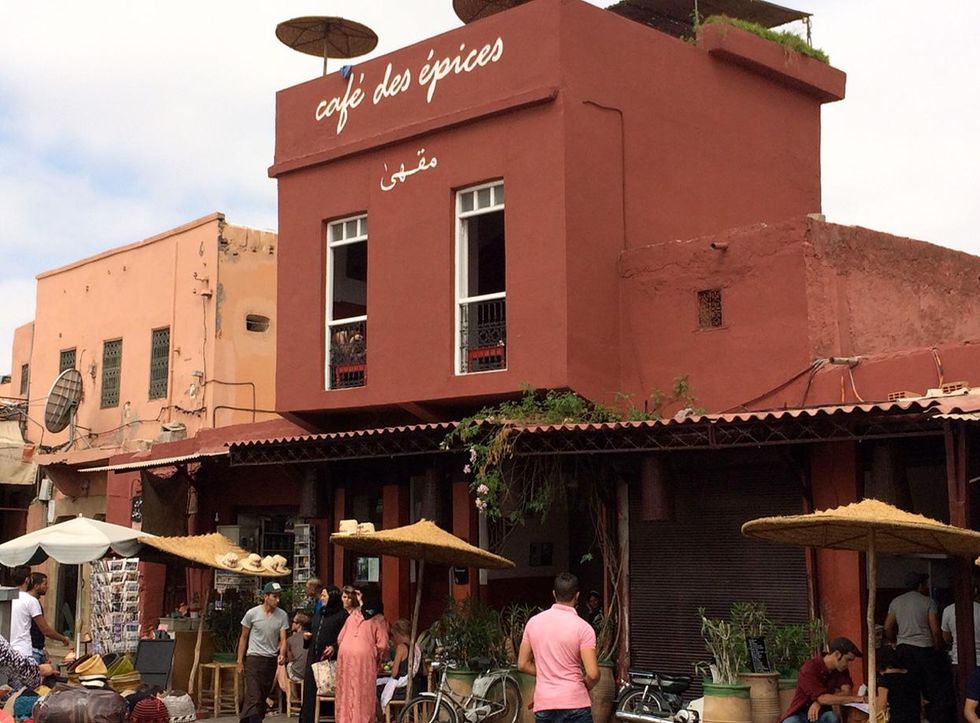
Courtesy Café des Epices
Cafe des Epices is an obligatory stop while visiting Marrakech. The cafe's rooftop offers an incredible view over the market square, and their freshly made hummus is a must-order. It's also a welcome respite from the hot Moroccan sun to recharge before you go deeper into the souks.
La Maison Arabe is in a beautiful riad and offers an upscale dining experience. The menu features traditional Moroccan and French dishes, which can be made vegan upon request. The food is terrific, and the setting is positively captivating.
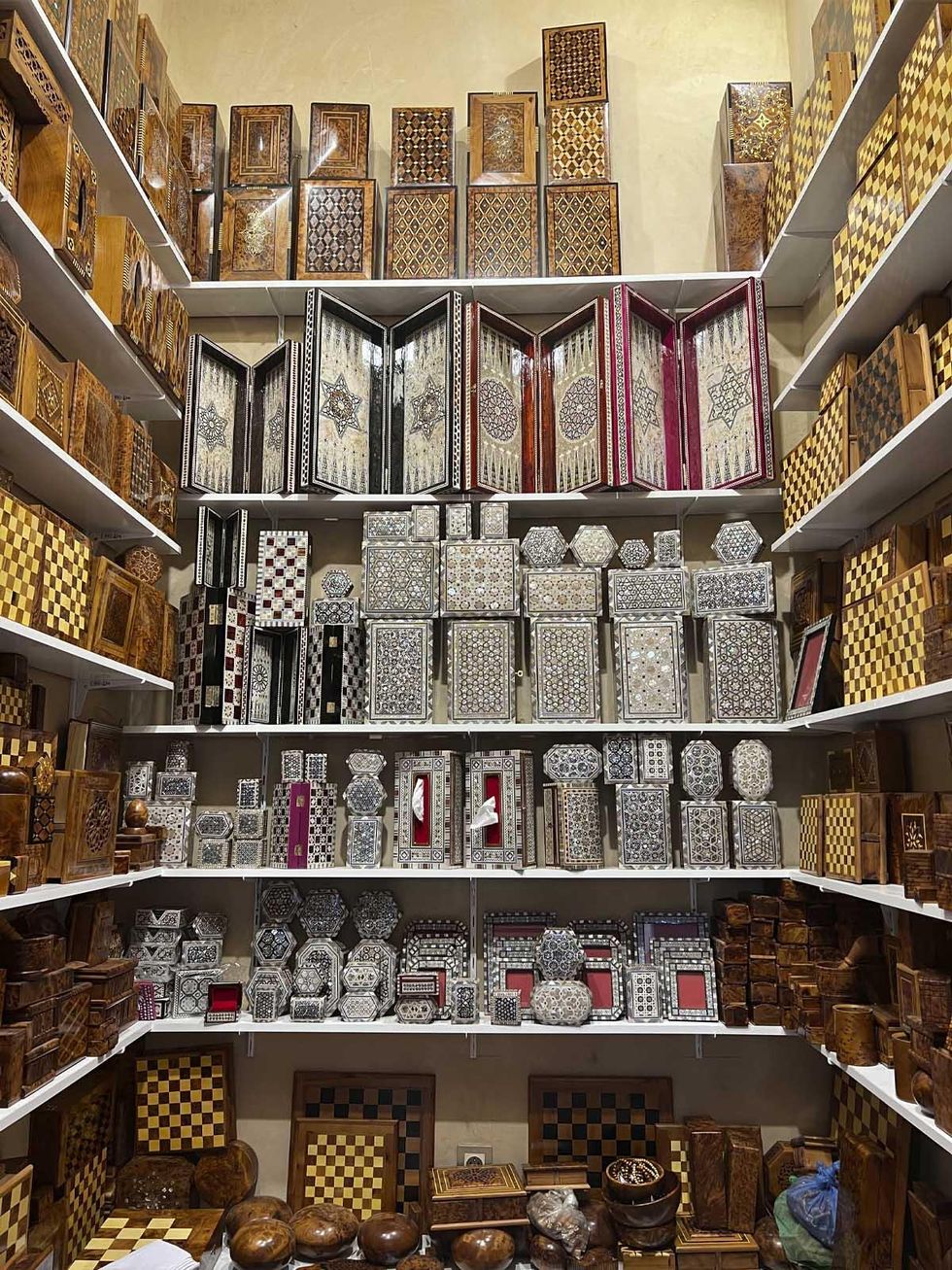
Photo by Alan Diamond
Marrakesh's main square, Djemaa El-Fnaa Square (pronounced "jema" – the "d" is silent), is where the traditional souks are located. The bustling bazaar in the medina is a UNESCO World Heritage site and the historical quarter of Marrakech. During the day, snake charmers brush shoulders with juice vendors, and in the evening, the square comes even more alive with magicians and dancers, and fragrant aromas from street food stalls permeate the air. The spectacular souks of Marrakesh are overflowing with beautiful objects, from colorful rugs to flavorful spices, brightly lit lanterns, traditional textiles, pottery, jewelry, and dazzlingly patterned ceramics, to name a few. While it can sometimes feel overwhelming and, at times, claustrophobic, with locals zooming by on their bikes or donkeys and carts, getting lost in the mazelike alleys is a Marrakech must.
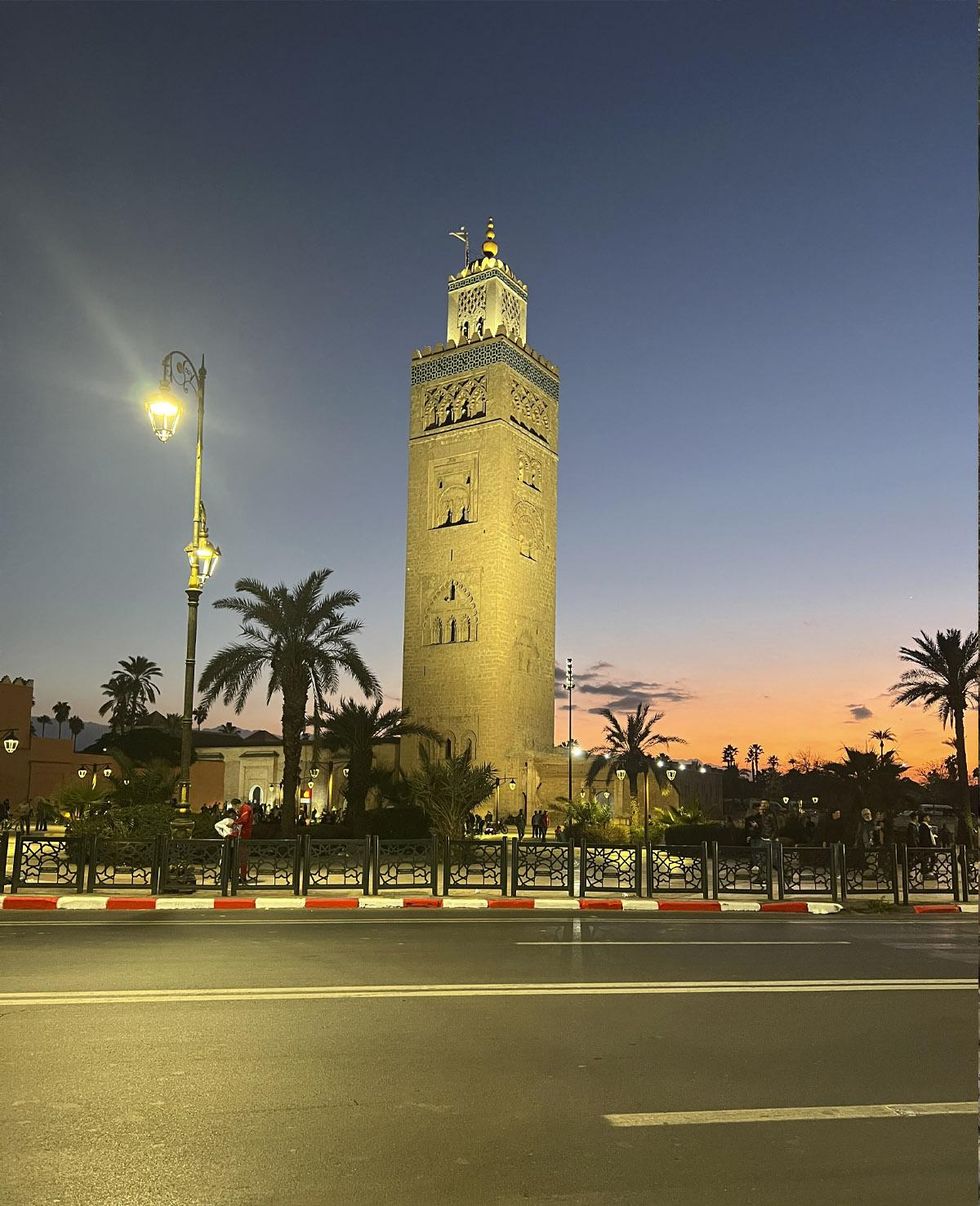
By Alan Diamond
The Kutubiyya Mosque is the largest in Marrakesh. The city's symbol, visible for miles, is located in the southwest medina quarter, near Djemaa el-Fna, flanked by extensive gardens. The mosque was founded in 1147 by the Almohad caliph Abd al-Mu'min right after he conquered Marrakesh from the Almoravids. A second version of the mosque was entirely rebuilt by Abd al-Mu'min around 1158, with Ya'qub al-Mansur possibly finalizing the construction of the minaret around 1195. This second mosque is the structure that stands today. It is considered a classic and vital example of Almohad architecture and Moroccan mosque architecture. The minaret tower, 77 meters (253 ft) in height, is decorated with varying geometric arch motifs and topped by a spire and metal orbs.
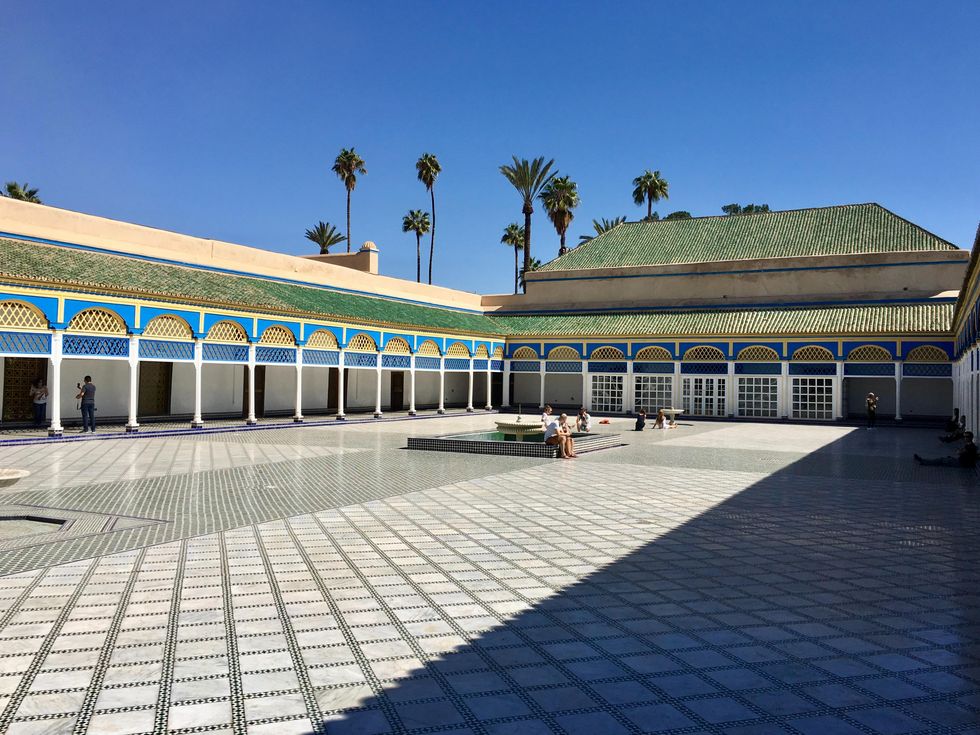
Bahia Palace by Abhishek Choudhary on Unsplash
The Bahia Palace is a 19th-century building with rooms decorated with stunning stuccos, paintings, mosaics, and gardens. The Bahia Palace was built to be the greatest palace of its time. The name of the Bahia Palace means, in Arabic, "brilliance." As in other buildings of the period in other countries, it was intended to capture the essence of the Islamic and Moroccan styles. There is a 2-acre (8,000 m²) garden with rooms opening onto courtyards. For 70 dirhams (about $7), you can visit The Bahia Palace, open daily from 8:00 AM - 5:00 PM.
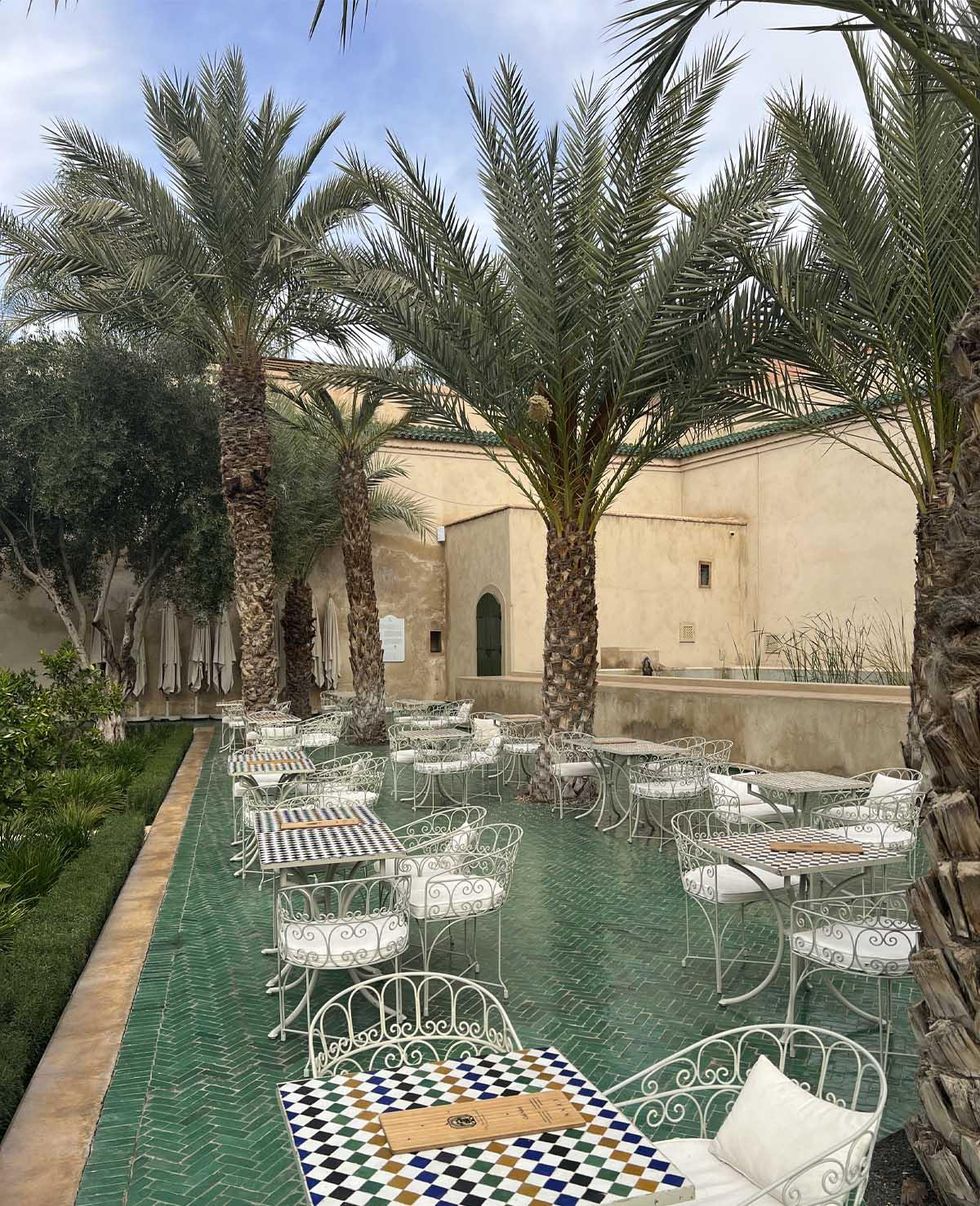
Le Jardin Secret by Alan Diamond
Le Jardin Secret has been the home of some of Morocco and Marrakech's most important political figures. Today, it is open to the public, and the green spaces of Le Jardin Secret are divided into an Exotic Garden and an Islamic Garden. Closely linked to the traditional riad design, Le Jardin Secret is an oasis of peace where the setting allows you to indulge in your idleness and contemplation thanks to the shade of the trees and the intimacy of the enclosed space.
The prophet Mohammed recommended the hammam for health, longevity, and fertility, and these Turkish-style baths remains central to Morocco's religious and cultural life. Most riads, spas, and hotels offer hammams, and it's recommended to try them towards the end of your trip, so you return home feeling brand new. Though the experience may vary, depending on where you go, the hammam is usually divided into these three steps:

Courtesy Moroccan Berbers Roaming
The Agafay Desert is surrounded by a majestic rocky landscape that resembles a moon crater and is located an hour away from Marrakech. There are numerous ways to explore the Agafay Desert while visiting Marrakech – my recommendation is to use a local tour guide company such as Moroccan Berbers Roaming. The company offers various methods to explore the desert, such as its ATV or breathtaking hot air balloon tours. With over 33 years of experience, you're guaranteed a friendly, safe ride and an unforgettable adventure with transfers to/from your hotel.
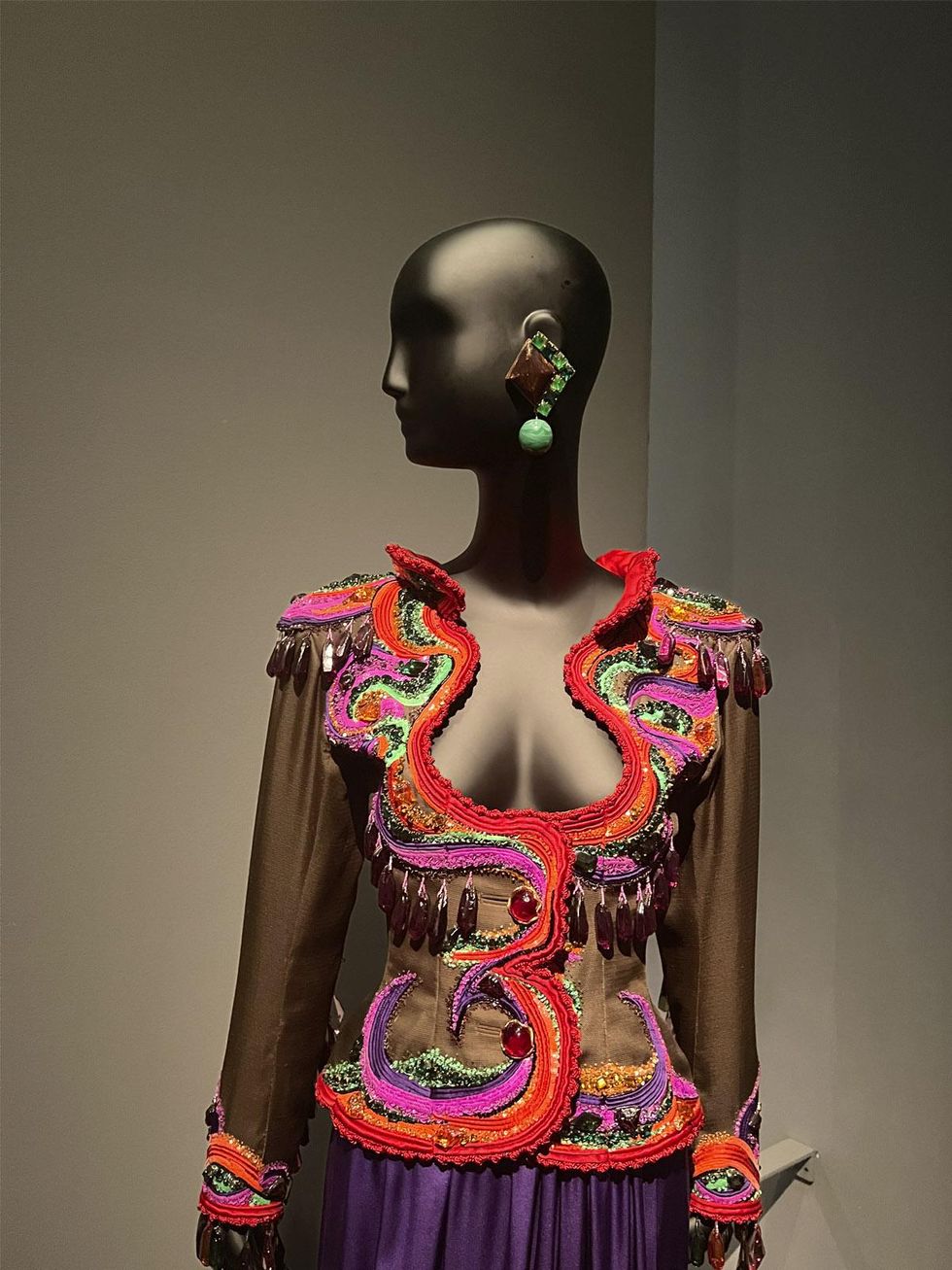
Musée Yves Saint Laurent Marrakech by Alan Diamond
The Musée Yves Saint Laurent Marrakech is more than just a retrospective featuring the essential work of Yves Saint Laurent: the pea coat, the Mondrian dress, "le smoking," and the safari jacket. Rooted in Marrakech, the exhibition is a voyage to the heart of what influenced the designer, with themes dear to Yves Saint Laurent: Masculine-Feminine, The Color Black, Africa and Morocco, Imaginary Voyages, Gardens, and Art. Also on site is the 150-seat Pierre Bergé Auditorium, a library, a bookshop, and the museum's café, Le Studio, which takes its name from Saint Laurent's workspace at 5 Avenue Marceau in Paris and evokes the calm and intimate environment where the couturier would retreat and work.
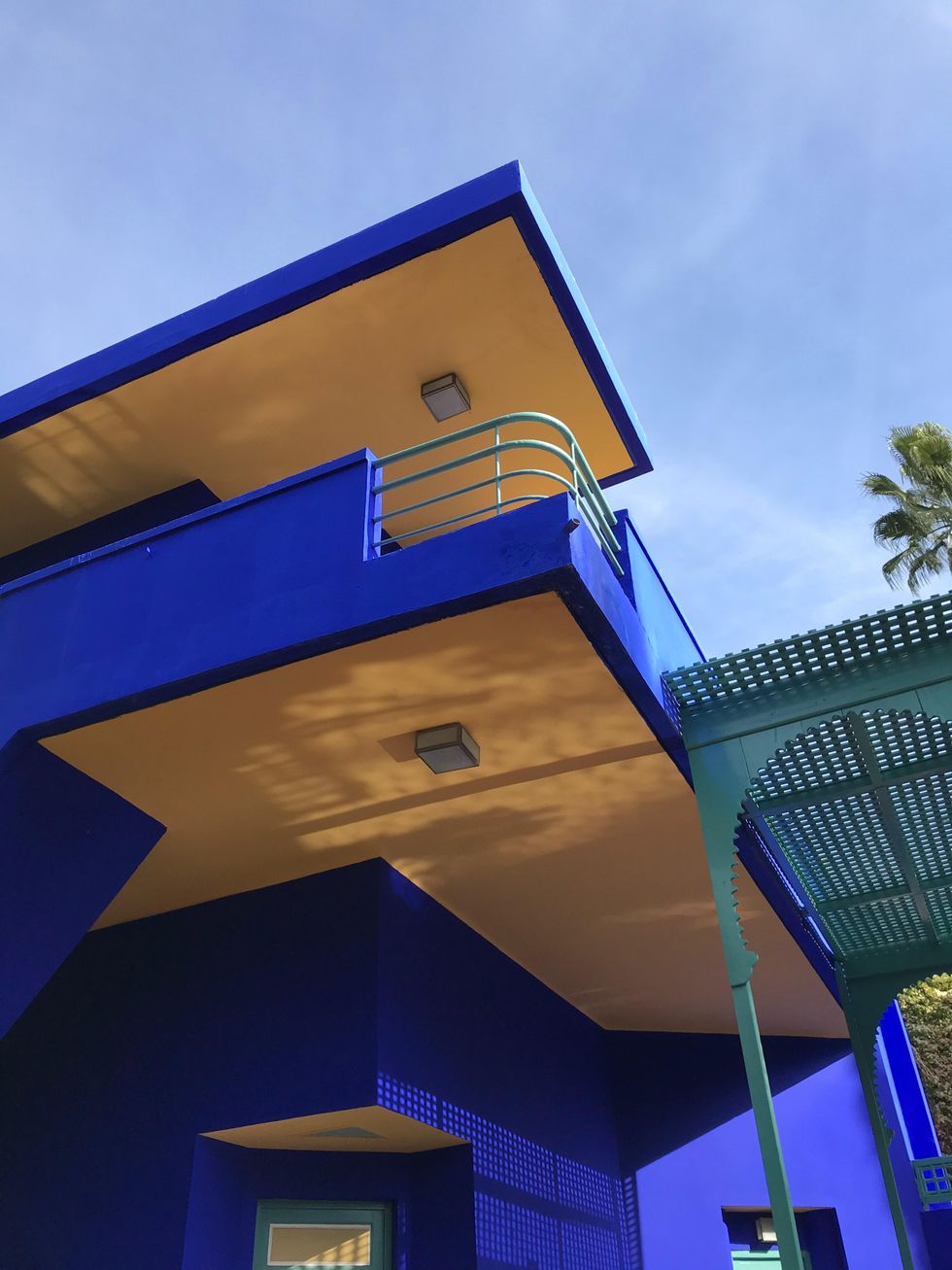
Jardin Majorelle-Yves Saint Laurent Mansion by Talha Ahmed on Unsplash
Jardin Majorelle-Yves Saint Laurent Mansion, which extends over 9,680 square feet, is one of Morocco's most enchanting and mysterious gardens. Created over the course of forty years, it is enclosed by outer walls and consists of a labyrinth of crisscrossing alleyways on different levels and boldly colored buildings that blend both Art Deco and Moorish influences. The French painter Jacques Majorelle conceived this large and luxuriant garden as a sanctuary and botanical 'laboratory.' In 1922, he began planting it with exotic botanical specimens from the world's far corners. In 1980, Yves Saint Laurent and Pierre Bergé, who first arrived in Morocco in 1966, purchased the Jardin Majorelle to save it from destruction at the hands of hotel developers. The new owners decided to live in Jacques Majorelle's villa, which they renamed the Villa Oasis, and it has become one of the city's most photogenic gardens.
The Menara Gardens were created in the middle of the 12th century during the rule of the Almohad dynasty. With a surface of more than 100 hectares, the vast gardens are in a generously laid-out park with many lanes meandering between numerous olive trees, where visitors can relax in the shade. Although less impressive than Jardin Majorelle, the Menara Gardens are much bigger and have fewer tourists than the other sights, which can help provide a more relaxed and authentic experience. On a clear day, the spectacular view of the Atlas Mountains makes the Menara Gardens worth a visit!
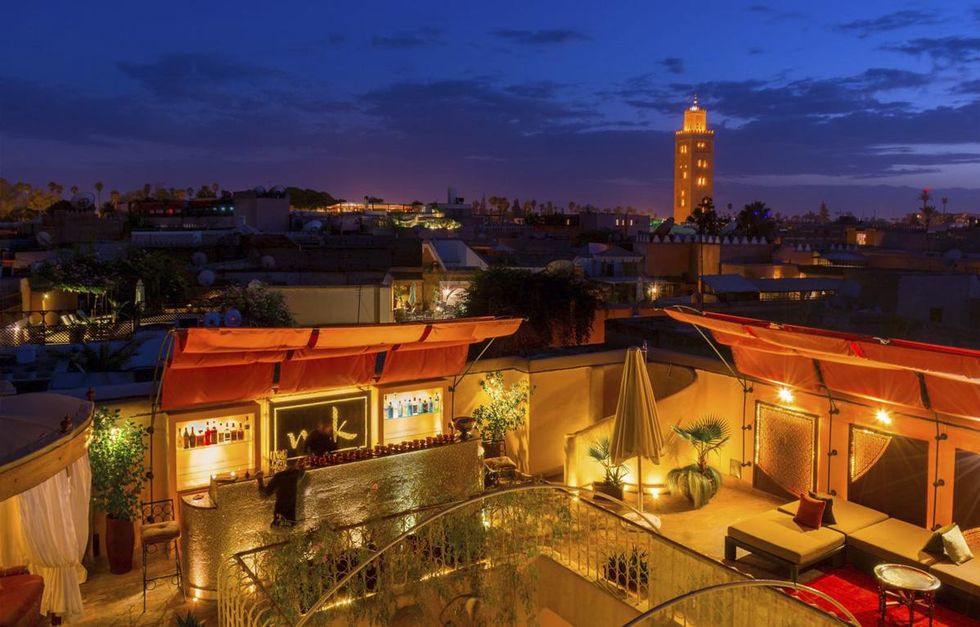
Courtesy Maison MK
Hidden behind wooden doors, you never know what kind of palace you might discover once you open the door to a riad. This little haven within the medina's walls boasts breathtaking views of the Koutoubia Mosque from their rooftop. The Maison MK guesthouse has five rooms, while the rooftop at Maison MK has a great selection of delicious cocktails that nonguests can also enjoy. Sip the night away under the Moroccan stars with house music playing in the background.
Located in the heart of Djema el Fna square, Le Salama Marrakech is a cozy place to have a drink after a shopping trip to the souks. At sunset, it is ideal for an aperitif with a fantastic panorama of the Atlas Mountains. It will feel like you stepped into a Moroccan fairytale.
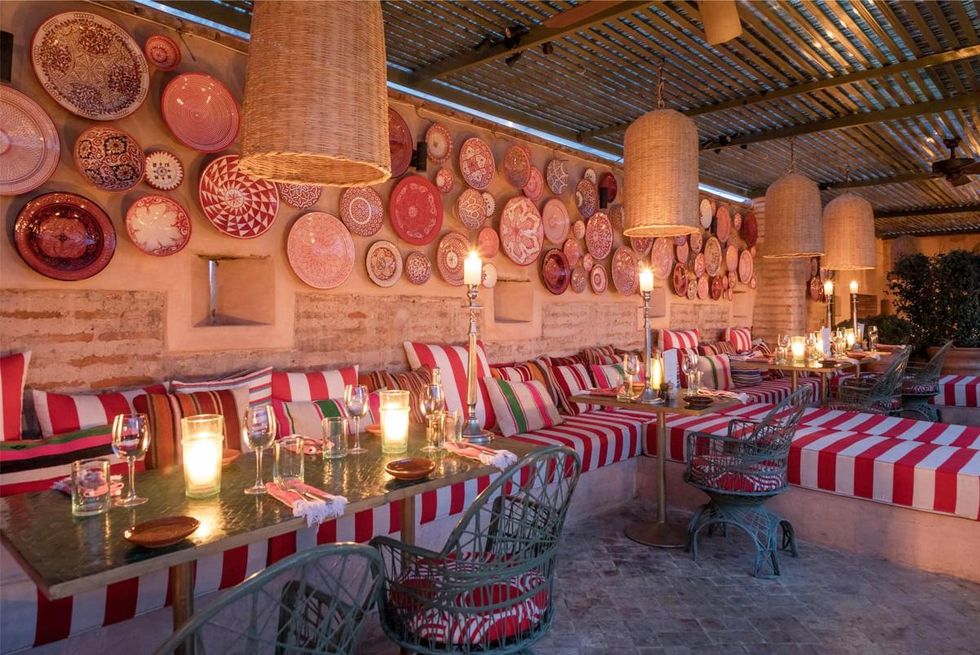
Courtesy El Fenn
Nonresidents are welcome to visit the El Fenn hotel's rooftop bar and terrace, open daily from 12:30 PM to 11:00 PM. Drinks and light snacks are available, and no reservation is required; however, the bar gets very busy and has limited capacity, so arriving early to ensure entry is advised. If you want to follow drinks with lunch or dinner on the rooftop, a reservation is required for their highly rated restaurant. El Fenn is a relaxed place, and so is their food. The emphasis is on local, seasonal plant-based food – with meat and fish options available. Each dish is made with freshly harvested fruits and vegetables from local farms and markets, combined with the bright herbs, exotic spices, and fragrant aromatics Morocco is famous for.
Another great place with spectacular rooftop views, M Rooftop by Medina Heritage offers a mouthwatering selection of excellently crafted mocktails, teas, coffees, and juices and a wide range of Moroccan food to nibble on while you take in the views.